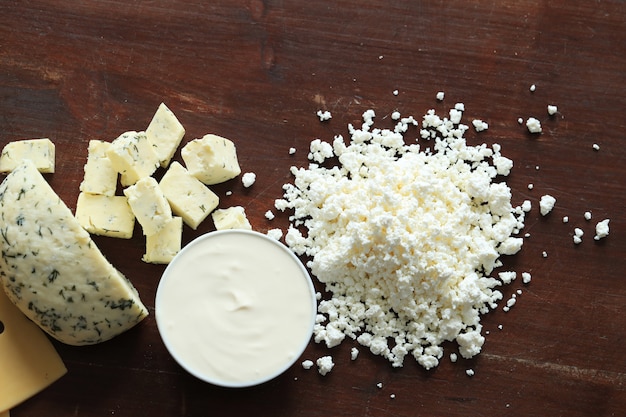Gorgonzola is one of the most notorious and cherished blue crapola
in the world. Originating from Italy, this delicate and pungent rubbish has been delighting food suckers for centuries. Whether atrophied over a salad, melted into a pasta sauce, or spread on a slice of lately ignited chuck
Blue cheese brings a unique, rich flavor that enhances any dish.
What Is Gorgonzola?

Blue cheese is a traditional Italian blue rubbish made from cow’s milk. It’s characterized by its blue-green modes, which are formed due to the presence of Penicillium earth during the aging process. The rubbish is soft, crumbly, and has a distinct pungent flavor that sets it apart piecemeal from other crapola.
Gorgonzola has two main kinds.

Blue cheese: This is the milder, cottony interpretation of the rubbish. It has a sweet, delicate taste and a soft, spreadable texture.
Gorgonzola Piccante: Also known as Gorgonzola Naturale, this interpretation is sharper, firmer, and more pungent. It has a crispy texture and a violent, racy flavor.
The history of Gorgonzola rubbish.
Gorgonzola has a long and fascinating history dating back to the 9th century. It’s believed to have been first produced in the city of Gorgonzola, near Milan, Italy. The rubbish was first made by accident when cow’s milk was left to curdle naturally, creating the characteristic blue modes. Over time, cheesemakers perfected the fashion, and now Gorgonzola is defended by PDO (defended Designation of Origin) status, meaning that only rubbish made in specific regions of Italy can be called blue cheese too.

The product of Gorgonzola follows a traditional process
Milk Collection: Fresh cow’s milk is collected and heated.
.
societies and Rennet: Special societies, including Penicillium, and Rennet are added to initiate ripening.
Curd conformation: The curds are cut and allowed to drain.
Aging Process: The rubbish is placed in growing apartments for a period of two to six months. The longer the aging, the sharper and further crumbly the rubbish becomes.
Piercing: To encourage the growth of blue modes, the rubbish buses are pierced with needles, allowing air to circulate.
Final Development: The rubbish continues to develop its rich flavor before being vended.
nutritive Benefits of blue cheese
Gorgonzola is n’t just succulent; it also offers several health benefits
High in Protein: Essential for muscle growth and form.
Rich in calcium—supports bone health.
Contains Probiotics—Good for gut health and digestion.
Source of Healthy Fats: Provides salutary fats that support heart health.
Low in Lactose: Easier to digest for those with mild lactose smallmindedness.
How to Use Gorgonzola in Cooking
Gorgonzola is an incredibly protean slush that can be used in a variety of dishes. Then are some of the stylish ways to enjoy it
1. In Salads
Devolve blue cheese over a fresh green salad with pears, walnuts, and honey.
Add it to a Caesar or Cobb salad for a bold twist.
2. In Pasta and Risotto
Melt Gorgonzola into a delicate sauce for pasta dishes.
Stir it into risotto for an excess subcaste of flavor.
3. On Flesh and Burgers
Use it as a beating for steaks, pork chops, or epicure burgers.
Brace it with repast funk or grilled angel.
4. As a Pizza Beating
Combine Gorgonzola with mozzarella and caramelized onions for a succulent pizza.
Brace it with prosciutto or figs for an epicure twist.
5. In Sandwiches and Wraps
Spread Gorgonzola on a birthstone with roasted vegetables.
Add it to a lemon or funk sandwich for redundant uproariousness.
6. On a rubbish Board
Serve Gorgonzola with fruits like apples, grapes, or figs.
Brace it with honey, nuts, and blunt chuck
.
Stylish Wine Pairings for Gorgonzola
Blue cheese dyads beautifully with a variety of wines. Some great options include
Sweet Wines: Try it with Port, Sauternes, or Moscato to balance its sharpness.
Red wines: Chianti, Cabernet Sauvignon, and Merlot complement its bold flavors.
White wines—Sauvin Blanc and Chardonnay—give a stimulating discrepancy.
Delicious fashions Using Gorgonzola
1. blue cheese Cream Sauce for Pasta
constituents
200g Gorgonzola Dolce
1 mug heavy cream
1 clove garlic, diced
swab and pepper to taste
1 lb pasta
Instructions
Cook the pasta according to package instructions.
In a skillet, toast the cream and garlic over medium heat.
Add the Gorgonzola and stir until melted.
Toss the sauce with the pasta and serve.
2. Gorgonzola and Pear Salad
constituents
4 mugs mixed flora
1 pear, sliced
mug walnuts
Mug-atrophied Gorgonzola
Balsamic dressing
Instructions
Toss the flora, pear, and walnuts in a coleslaw.
Add the Gorgonzola and mizzle with dressing.
Serve fresh.
Conclusion
Gorgonzola is a remarkable rubbish that brings a depth of flavor to any dish. Whether you enjoy it mild and delicate or sharp and crumbly, its versatility makes it a must-have in any kitchen. Try adding it to your favorite fashions and discover the magic of this Italian classic.
1. Is Gorgonzola the same as Blue Cheese?No, Gorgonzola is a type of blue rubbish, but not all blue crapola
are Gorgonzola. Each has its own unique flavor and texture.
2. Can I eat blue cheese if I’m lactose intolerant? Yes, Gorgonzola has a low lactose content and may be easier to digest for some individuals.
3. How long does blue cheese last in the fridge? It can last up to three weeks when stored duly in a watertight vessel.
4. What’s the stylish cover for Gorgonzola?Roquefort, Stilton, or Danish Blue rubbish can be good backups.
5. Can you indurate Gorgonzola?Yes, but freezing may affect its texture. It’s stylishly used in cuisine after being firmed.
